Introduction to Moksha Modules
Page Contents
Moksha Modules – powerful, flexible plugins!
One of the things that makes Bodhi Linux so powerful is its flexibility. Whether you’re running it on older hardware or building your dream desktop environment, Bodhi Linux can be tailored to your needs. At the heart of this customization are Moksha Modules—tiny plugins that can transform your desktop experience.
Let’s dive into what modules are, how they work, and how you can explore and enable them to get the most out of your Bodhi Linux system.
What Is a Module?
A module is like a plugin that adds new functionality to the Moksha desktop. They’re not required for the window manager to function, but they enhance and extend it—sometimes in small ways, sometimes dramatically.
You can load or unload modules at any time by going to: Main Menu → Settings → Modules
(More advanced users may know one can also manage modules using the enlightenment_remote command)
Each module saves its configuration per user. These settings are stored at :
$E_HOME_DIR/config/$E_CONF_PROFILE
They’re stored as compressed .eet files and are not human-readable and not really intended to be edited manually (though technically possible, if you know what you’re doing).
Do Modules Use Memory?
Not until you load them!
Modules are extremely efficient—thanks to the Enlightenment Foundation Libraries (EFL)—and use very little memory even when active. But if you’re working with very limited RAM, it’s good to be mindful of what you have enabled.
Behind the scenes, modules are shared libraries (usually .so files) stored here:
$E_LIB_DIR/enlightenment/modules/
On most systems, that path looks something like:
/usr/lib/x86_64-linux-gnu/enlightenment/modules/
Core Modules in Moksha
There are around 50 modules in the Moksha source code. Not all are compiled or included by default in Bodhi Linux—we only ship what’s needed for a lean, usable desktop. One special module, E_Wizard, is hidden and runs behind the scenes during the initial setup.
Here are a few essential modules you’ll find active by default (or ones you’ll probably want):
- Mixer Module – Control your system sound
- Taskbar Module – View open/minimized windows
- Key Bindings Module – Customize keyboard shortcuts
- Notification Module – Get on-screen notifications
- Systray Module – Show tray icons for apps like Network Manager, Telegram, CherryTree, etc.
- Start Module – Adds a Start menu for launching applications
and many more!
Extra Modules: More Power at Your Fingertips
Some modules, such as the Forecasts Module aren’t installed by default., nor are they a part of the Moksha source code. That’s part of our minimalist design philosophy. But you can easily add them from the Bodhi Linux software repositories.
To install extra modules, use:
- Synaptic Package Manager
(Main Menu → Applications → System Tools → Synaptic) - AppCenter
- Or from the terminal using apt or nala
All extra modules follow this naming convention:
moksha-module-<mod_name>
We currently have over 30 extra modules in the repo – some highlights include:
- moksha-module-compton – Adds compositing (transparency, shadows, etc.)
- moksha-module-forecasts – Displays the current weather
- moksha-module-moon – Shows the current moon phase
- moksha-module-stickynotes – Sticky notes on your desktop
- moksha-module-wallscape – Animated or rotating desktop backgrounds
Uninstalling or Disabling Modules
The nice thing about modules is that they don’t use any memory unless they’re loaded. So you don’t need to uninstall Extra Modules unless you really want to reclaim disk space.
To completely remove any Extra Module, just uninstall it like any other package using:
- Synaptic Package Manager
-
apt remove moksha-module-<mod_name>
-
nala remove moksha-module-<mod_name>
Note: you can’t remove modules that are built into Moksha, and we don’t recommend trying to delete them manually. Even if you do delete them, a future update will just restore them.
Final Thoughts
Moksha Modules are one of the best parts of the Bodhi Linux experience. You can keep your desktop lean and clean—or build it up with exactly the features you need. Whether you’re a minimalist or a tinkerer, modules give you that power!
In future wiki posts, we’ll be highlighting individual modules and what they can do. Stay tuned for deep dives into modules like Compton, Forecasts, Systray, and more.
Got a favorite module? Let us know in the comments or on the Bodhi Forums!
🌟Keep it light. Keep it fast. Keep it Bodhi 🌟
